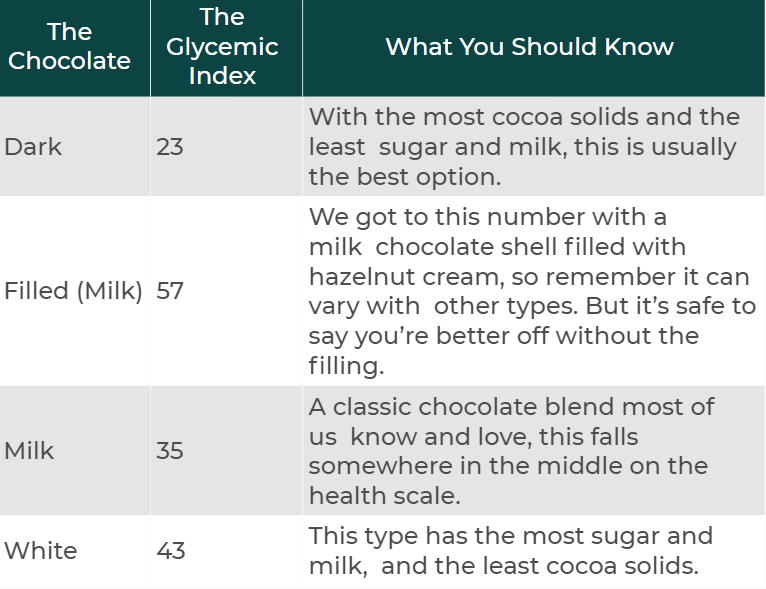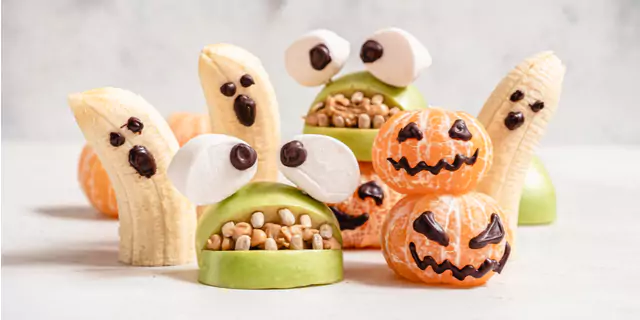What You Need to Know About Candy and Blood Glucose This Halloween

Key Takeways
Whether you’ve got a single sweet tooth or a whole row of them, candy can be one of the simplest pleasures in life. Especially this time of year, when there’s no shortage of opportunities to indulge in a piece (or maybe a whole bag!) of the sweet stuff. Hard candies, gummies, lollipops, jellybeans… whatever your poison is, you’ll find it in the treasure trove of sweet treats around you this Halloween.
For some of us, treating ourselves to a little Halloween candy may not do too much harm—we just have to work a little harder to get back on track with our health goals after. For others, the stash of sweet treats can have long-term effects on our health.
If you’re trying to stay healthy, it can feel a bit like a minefield that you have to navigate with extra care to avoid any sugar bombs. Since the average American eats 77 grams of sugar per day, it’s a good idea for all of us to keep track of what we’re consuming this holiday and how it’s affecting our health. The average child will collect 3,500 to 7,000 calories on Halloween, so it’s imperative to keep a close watch around this festive season.
Staying Healthy During This Spooky, Sugary Time of the Year

Halloween is many people’s favorite holiday, and it’s not hard to see why. The costumes, the decorations, the parties—and of course, the sugar. Steering clear of any and every kind of candy may seem like the best way to stay healthy, but it’s not always practical, especially this time of year. And while we’d be lying if we said you could throw caution to the wind and eat bag after bag of concentrated and refined sugar-filled candy, there is a way to find a balance.
It can be complex sorting through all the options, but we’re here to help. First, remember that tracking how your body reacts to different candy with a continuous glucose monitor is a great way to see what’s going on in there. It’s also a good idea to know what you’re consuming, so read on for a breakdown of a few popular types of candy to see what your best bet is for a sweet treat and why.
Hard Candies
Hard candies, like lollipops and butterscotch discs, are technically pure sugar but digested slower.

Sugar starts to digest as soon as it meets your tongue, which is why even small amounts can treat short-term dips in blood sugar levels. Hard candies tend to take slightly longer to dissolve into its component sugars. So, the rapid spike in blood glucose can be smaller than if someone were to eat pure powdered sugar, but these treats can still cause larger glucose spikes.
The recommended amount of sweets in a day is not more than 10% of your total daily calories. So, even though you digest hard candies like Jolly Ranchers slightly slower than other types, you still have to pay attention to the total amount of sugar.
As with anything, it all depends on what your nutrition goals are, of course. Take sugar-free Jolly Ranchers as an example. They may not be your go-to this Halloween, but if you’re on a ketogenic diet, they may be a better option.
This is because these sweet-but-not-too-sugary treats use sugar alcohols instead of real sugar to sweeten. For some people, these can satisfy a sweet tooth and work well in moderation. For others, sugar alcohols in excess can cause bloating and discomfort. The trick is to find out how your body responds to these candies—consider asking a dietitian for help here!
Gummies
Gummies have a similar makeup to hard candies but are chewy, soft, and gelatinous.

Although these can taste like hard candies, they’re made with gelatin, a flavorless ingredient typically produced from animal collagen. This means they have a completely different texture, as they are chewy and soft instead of smooth and hard.
Multivitamin supplements are usually made in gummy form to encourage consumption. Unfortunately, this same stickiness also means they will stick to your teeth and can increase your risk of cavities.
When it comes to what they do to your health, it depends on flavor makeup and the type of gummies you’re eating. As an example, let’s look at Haribo Starmix gummies. They have a glycemic index of 72, so although they take time to chew, they still have a high glycemic index value. In fact, the average serving of gummy bears contains more than five teaspoons of sugar!
Chocolates
It's difficult to put these tasty treats in a single box as they have a wide range of types and compositions.

We could write an entire book on chocolate, but for the moment, let's focus on two main distinctions. The first is the difference between filled and empty chocolates, or those filled with fruit syrups, caramel, crème, or any other kind of liquid or semisolid flavor. The second is the difference between white, milk, or dark chocolate. We'll get to the glycemic indexes of different types of chocolate later on in this piece. For now, let's focus on how your blood glucose levels may respond to two broad categories of chocolate:
1) Filled and Unfilled Chocolates
The upshot here is that filled chocolates have a double dose of sugar, one in the filling (which digests quickly) that the blood absorbs rapidly. The second is in the chocolate shell, also quick to absorb but not as fast as the filling, whether liquid or semisolid.
Recall from earlier those hard candies digested less quickly than pure sugar because it takes a long time to break them down in the mouth. Liquid fillings in chocolates are the exact opposite—they digest easier, which means they can cause quicker, more dramatic increases in blood sugar.
2) White, Milk, and Dark Chocolates
This is most likely information you already know but let's go through it again anyway, just in case. The makeup of all chocolate is a mix of sugar, milk, and cocoa solids (except white chocolate, but more on that later). Although some dark chocolates may be mislabeled, a typical bar of dark chocolate is 70% cocoa solids and 30% milk and sugar.
Now, here's why white chocolate is different. It has no cocoa solids at all, so it would be 0% cocoa solids. Milk chocolate is the middleman in this situation, hovering somewhere in between the other two percentages. What may surprise you is how low all three types are on the spectrum of glycemic indices. Dark chocolate, in particular, can almost masquerade as healthy food when you eat it in moderation. So, if you've got to pick this Halloween, this may be your safest bet!
Find the right Nutrisense programto turn insight into progress.
Glycemic Indices to Help You Sort Through Chocolate Types
Remember that chart we promised you? Here it is! Before you pick, learn more about the differences between filled, empty, and cocoa solid types so you can make an informed decision for your health:

Other Options to Satisfy Your Candy Cravings

Halloween is one day of the year, so there’s no need to punish yourself if you feel sugar cravings. But don’t just give yourself a pass to go overboard because it’s ‘just one day.’ Remember that your body deserves better than an endless sea of sugar spikes and energy crashes.
To enjoy this holiday responsibly, consider unfilled dark chocolates in moderation, or a small amount of your favorite candy after a meal rich in protein to keep your glucose stable. And, if you’re looking to avoid sugar altogether but want a little sweet treat anyway, consider fresh, whole fruit after a meal.
For some people, sugar-free options may work well. For others, they may not be the best choice. Remember there's no one-size-fits-all diet, so it's important to consult with your dietitian to ensure you’re making the right decision for your body.
Other options for a more natural sweet treat include sliced apples with natural peanut butter or plain yogurt with fresh berries. Or get into the Halloween spirit with some peeled grapes—they double up as great eyeballs for your Halloween table decor! Boo!
Go Beyond Glucose Data with Nutrisense
Your glucose can significantly impact how your body feels and functions. That’s why stable levels are an important factor in supporting overall wellbeing. But viewing glucose isn't enough. Nutrisense, you’ll be able to learn how to use your body's data to make informed lifestyle choices that support healthy living.
One-to-one coaching
Sign up to access insurance-covered video calls to work with a glucose expert: a personal registered dietitian or certified nutritionist who will help tailor your lifestyle and diet to your goals.
Monitor and measure what matters
With the Nutrisense CGM Program, you can monitor your glucose with health tech like glucose biosensors and continuous glucose monitor (CGM)s, and analyze the trends over time with the Nutrisense App. This will help you make the most informed choices about the foods you consume and their impact on your health.
Find your best fit
Ready to take the first step? Start with our quiz to find the right Nutrisense program to help you take control.

Kara Collier is a registered dietitian nutritionist and certified nutrition support clinician who is passionate about reshaping how we approach prevention, behavior change, and metabolic health. A Forbes 30 Under 30 honoree, she’s helped over 150,000 people improve their metabolic health using tools like continuous glucose monitors and behavior-focused nutrition strategies. Kara has been featured by Forbes, UC Berkeley, and HLTH, and has appeared on top podcasts like Mind Pump and The Genius Life.




